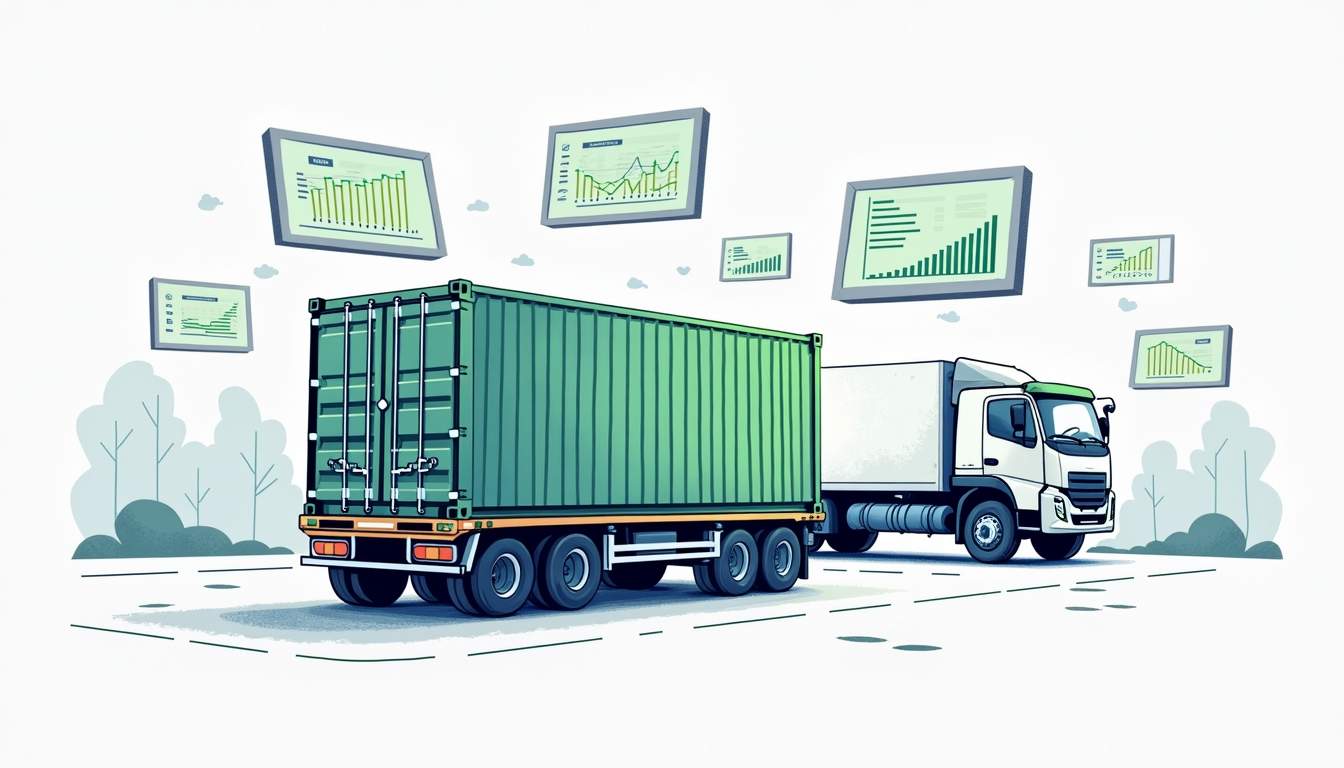Many owners find shipping oversized vehicles such as RVs, boats, and larger automobiles daunting. The intricacies involved in transporting such large and valuable items require careful planning and understanding. This guide will provide a thorough overview of important considerations and steps for successfully shipping your oversized vehicle.
Understanding the Basics of Shipping Oversized Vehicles
The first step in the process of shipping an oversized vehicle is understanding what qualifies as “oversized.” Generally, vehicles that exceed standard dimensions—such as width, height, or weight—are categorized as oversized. This can include RVs, boats, trailers, and even certain large trucks. Each of these vehicle types presents unique challenges and considerations when it comes to shipping, making it essential to have a clear understanding of what you are dealing with before you begin the process.
Shipping oversized vehicles is typically not as straightforward as traditional vehicle transport. It often requires special equipment, such as lowboy trailers or flatbed trucks, which are capable of accommodating larger dimensions. Additionally, you may need to consider local laws and regulations which can vary by state or country. For instance, some regions may have specific routes designated for oversized loads, and permits may be necessary to ensure compliance with local traffic laws. Understanding these regulations not only helps in avoiding fines but also ensures the safety of your vehicle during transit.
Choosing the Right Shipping Method
There are several methods to consider when it comes to shipping oversized vehicles. One common option is open transport, which is more affordable but exposes your vehicle to the elements. Closed transport provides greater protection from weather and road debris but can be more expensive. When deciding between these options, it’s important to weigh the value of your vehicle against the potential risks involved in open transport. For high-value vehicles, closed transport can be a worthwhile investment, offering peace of mind that your vehicle will arrive in pristine condition.
Another important factor to consider is whether you’ll need door-to-door transport or terminal-to-terminal service. Door-to-door is often more convenient, as it minimizes the amount of handling your vehicle might endure, while terminal-to-terminal can save money but might involve more effort on your part. If you choose terminal-to-terminal service, be prepared for the logistics of dropping off and picking up your vehicle at designated locations, which may not always be close to your home or destination. Additionally, consider the operating hours of these terminals, as they can vary and may affect your schedule.
Preparing Your Vehicle for Shipping
Prior to shipping your RV, boat, or oversized vehicle, adequate preparation is essential. This may involve securing loose items, disconnecting the battery, and checking for any leaks that could cause problems during transport. Additionally, you should document the current condition of your vehicle with photographs. This documentation can serve as important evidence in the event of any damage occurring during transit and can help facilitate claims with the shipping company if necessary.
Ensuring your vehicle has enough fuel for transport is also important, but you should avoid leaving it too full. A quarter tank is generally sufficient and saves on weight, which can be a crucial factor in shipping vehicles over a certain weight limit. Furthermore, it’s advisable to remove any personal belongings from inside the vehicle, as shipping companies typically do not insure personal items. Taking these precautions not only helps ensure a smoother shipping process but also protects your investment and peace of mind during transit.
Finding a Reliable Shipping Company
Selecting a reputable shipping company is one of the most vital steps in the shipping process. Spend time researching potential options and look for companies with experience in handling oversized vehicles. Online reviews and testimonials can provide valuable insights into the reliability and quality of service offered by different companies. Additionally, consider reaching out to industry forums or social media groups where past customers share their experiences. This can give you a broader perspective on the strengths and weaknesses of various shipping companies.
When evaluating candidates, ask about their insurance policies. A reputable shipping company should offer comprehensive coverage to protect your vehicle during transit. Be wary of companies that cannot provide proof of insurance or fail to answer questions about their shipping practices. Furthermore, it may be beneficial to inquire about their claims process in case of damage or loss. Understanding how they handle such situations can give you peace of mind, knowing that you are working with a company that prioritizes customer satisfaction and accountability.
Understanding the Costs Involved
The cost of shipping an oversized vehicle can vary greatly based on several factors. Distance, size, weight, and the shipping method selected will all affect the final quote you receive. As a general rule, the longer the distance and larger the vehicle, the higher the cost. However, it’s also important to consider the type of transport, whether it be open or enclosed shipping, as this can significantly influence the price. Enclosed transport, while more expensive, offers added protection from the elements and potential road debris, which may be worth the investment for high-value vehicles.
It’s also wise to inquire about potential hidden fees. Some companies might charge extra for services like loading or unloading, or even if you select door-to-door shipping. Ensure you get a detailed quote before committing to any service. Additionally, ask about the payment structure; some companies may require a deposit upfront, while others may offer payment upon delivery. Understanding the full financial picture will help you avoid surprises and ensure that you are budgeting appropriately for your shipping needs.
Legal Requirements and Documentation
Shipping an oversized vehicle often involves navigating various legal requirements. Depending on the origin and destination of your shipment, permits for oversized loads may be necessary. These permits usually indicate to road authorities that your shipment exceeds standard vehicle dimensions and may interfere with traffic. It’s essential to check local regulations as they can vary significantly from one state or country to another. Some regions may have specific routes designated for oversized vehicles, which can affect shipping times and costs.
Documentation is also crucial. You’ll typically require the original vehicle title, registration, insurance verification, and any past maintenance records if applicable. Having these documents on hand will streamline the process, reducing the chances of complications during transport. Additionally, it may be beneficial to prepare a bill of lading, which serves as a receipt for the transportation services and outlines the terms of the shipment. This document can protect both you and the shipping company by clearly defining responsibilities and expectations throughout the shipping process.
Monitoring the Shipping Process
Once you’ve shipped your oversized vehicle, it’s advisable to stay in communication with the shipping company. Many reputable shippers provide tracking options for your peace of mind. This allows you to monitor the progress of your vehicle and anticipate its arrival. Tracking systems often include real-time GPS updates, which can give you a clearer picture of where your vehicle is at any given moment. This transparency not only alleviates anxiety but also allows you to plan accordingly for its arrival, ensuring that you are prepared to receive it when it reaches its destination.

In some cases, you may also have the option of arranging a delivery window. This feature can be particularly advantageous for those who have specific plans or schedules that need to accommodate the arrival of their vehicle. By coordinating with the shipping company, you can select a time frame that works best for you, which can be especially helpful if you are traveling or have other commitments. Additionally, being proactive about your delivery window can help the shipping company optimize their routes and schedules, leading to a more efficient process overall.
Receiving Your Vehicle
The final step in the shipping process involves receiving your vehicle. It’s important to conduct a thorough inspection upon delivery. Check for any signs of damage and ensure that your vehicle appears in the same condition it was in prior to shipping. Take your time during this inspection; look for scratches, dents, or any mechanical issues that may have arisen during transit. Documenting the condition of your vehicle with photographs can be invaluable, especially if you need to file a claim later on.
If you notice issues, document them immediately and contact the shipping company to discuss potential claims. Most reputable shipping companies will have protocols in place to address damage claims efficiently. Familiarize yourself with these procedures beforehand, as this knowledge can expedite the resolution process. Additionally, keep all relevant paperwork, such as the bill of lading and any inspection reports, organized and accessible. This preparation can make a significant difference in how quickly and smoothly any necessary claims are handled.
Final Thoughts
Shipping an RV, boat, or oversized vehicle does not have to be an overwhelmingly stressful experience. With proper planning, careful choice of shipping options, and thorough preparation, you can facilitate a smooth transition for your valuable assets. By understanding the shipping process and working with reliable partners, you can enjoy a successful transport experience, leaving you to focus on your journeys ahead. Moreover, consider sharing your experiences with others who may be in a similar situation; your insights can help fellow vehicle owners navigate the complexities of shipping, making the process easier for everyone involved.

